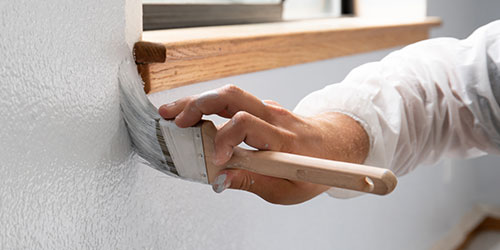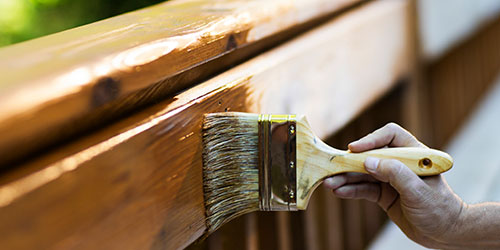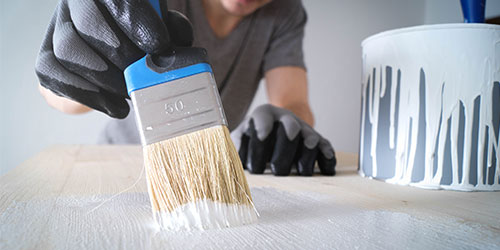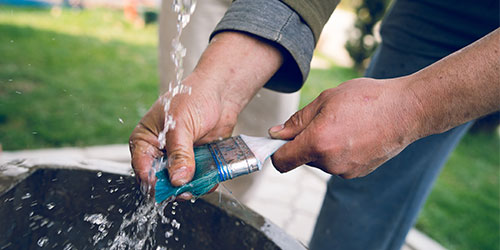The right equipment ensures you get a great finish.
The right size for the job
12-25mm: Small jobs and touch-up work.
38mm: Good for furniture, small panels, window frames, trellises, mouldings, shutters and downpipes.
50mm: For small to medium size jobs, such as doors, screens, tabletops, railings and cabinets.
63mm: Handy size for outdoor furniture, cupboards, gutters, eaves and doors.
75mm: Choose this for medium to large areas like fence posts, skirtings, fascias and floorboards.
100mm and above: Ideal for walls, floors, ceilings, roofs, fences and any large, flat surfaces.
Long-handled cutter brushes
Specially designed for door and window frames as well as painting the corner sections of walls and ceilings. Frequently used to finish roller-painted surfaces.
 The right quality
The right quality
Choose a brush with full-length hog bristles. The brush should also have a generous number of bristles (a good bristle pack). A quality brush holds more paint, provides smoother application and reduces paint spatter.
Matching paint with the right brush
For heavy oil-based paints and gloss, primers and varnishes use medium length bristles and solidly packed brushes.

Acrylic (water-based) paints are best applied with longer, synthetic bristled brushes.

Brush care and storage
For longer lasting lasting brushes, don’t:
Stir paint with the brush
Leave the brush to soak for too long
Use a wide brush to paint narrow pipes and surfaces
Rest a brush on its bristles
Leave paint to harden on a brush
You should always:
Wash the brush in the correct solvent for the paint.
Then wash thoroughly in warm soapy water, rinse and shake off excess water.

Comb bristles and hand shape while damp.
Hang up to dry.
Wrap in brown paper and store flat.